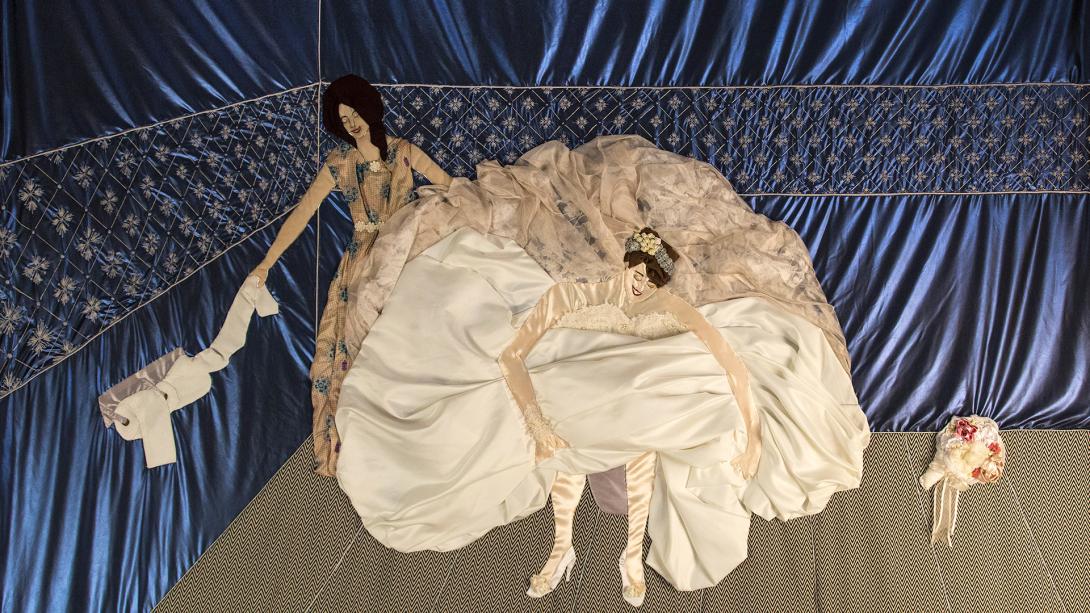Zahra Imani
APT9
Born 1985 Tehran, Iran
Lives and works in Tehran, Iran
Zahra Imani is interested in the way textiles relate to conventional ideals of femininity and their practical uses in everyday life. She trained as an oil painter at the Tehran University of Fine Arts and has worked as a children’s book illustrator and public mural painter. She draws on these disciplines, as well as Persian miniature painting, to create very large-scale textile compositions that depict intimate moments in Iranian women’s lives with humour and insight. The materials in her work are affordable and widely available from bazaars in Tehran; they are often used for garments or in the domestic sphere as curtains, cushioning or bedding. Imani is sensitive to the religious and political viewpoints on women’s bodies in the Islamic Republic of Iran, and she uses a wry humour to reflect upon these issues in her work.

Zahra Imani / Iran b.1985 / Wedding Day 2018 / Fabrics, embroidery, cotton, beads, sequins, lace / 200 x 250 cm / © Zahra Imani / Image courtesy: The artist
Through her figurative wall hangings, Zahra Imani depicts intimate exchanges between women and fleeting moments of private encounters. These small moments are presented on a large scale like the events depicted in grand history paintings. The artist is inspired by Persian miniature and European Renaissance painting traditions, which she then reinterprets in a highly individual way using an appliqué technique.
In her works, Imani uses a wide range of fabrics purchased from local markets designed for everyday use. These fabrics are ubiquitous in Iranian houses, and are used for curtains, cushions and furnishings or sewn into dresses, garments and outerwear. This choice of medium mirrors the accessible and everyday scenes depicted in her wall hangings. The tender, uneven stitches and imprecise folds of the fabric acknowledge the labour and personal endeavour devoted to making the artworks. The unfinished edges also suggest the possibility of a quick unravelling with a simple pull of a thread; these are not artworks designed to last for eternity. As a result, the works embody two durations: their slow creation and ephemeral life.
